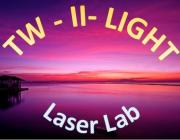High order harmonics generation emerges from the interaction of an intense ultra-short laser pulse with a gas target in the form of extreme ultraviolet (XUV) radiation. The process of high order harmonic generation (HHG) is most intuitively explained through the celebrated three steps model, in which, the electron is first tunnel out from the atom due to the strong electric field of the laser; it is then accelerated in the laser electric field and when the electric field changes direction it pushed back to the parent ion with excess of kinetic energy. The last step in this three steps model is the recombination with the parent ion accompanied by the release of the excess energy in the form of an energetic photon carrying typical energies of few tens of electron-volts. High order harmonics were generated in many different gases, including atomic, molecular and ionized gases. The resulting harmonic spectrum has a universal feature common to almost all gas species in use: it has a long plateau region in which the intensities of all the harmonics are almost identical, followed by a sharp drop called the cutoff energy. The universality of the harmonics spectrum and the lack of small details related to specific gas in use, suggests that the HHG process is a non-resonant one and was believed to be non-resonant for many years.
Recently, it was discovered the HHG in some metal vapors do show a single enhanced harmonic over the other neighboring harmonics. It was shown that the photon energy of this harmonic coincides with the transition from an autoionization state to the ground state. Such a resonance harmonic is very interesting both from the technological point of view as a promising candidate for efficient and intense coherent XUV source and also from academic interest about the still under debate of underlaying physics.

